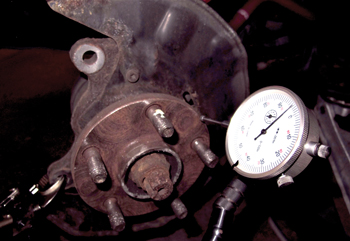a>
You may save 10 to 15 minutes by not having to use a dial indicator and a micrometer, but your chance for a comeback can dramatically increase.
Even if you use new rotors, your chance of a pulsation comeback could be greater than if you left the old rotors on the vehicle. Runout in the hub and new rotor can stack up to cause Disc Thickness Variation (DTV) in a few thousand miles. DTV is the main cause of pulsation. The following are some tips to help you when servicing brake systems.
Sometimes rotor wear can be seen with the naked eye, but, by this time, the rotor is unsafe. If you can see a difference in plate thickness, it’s a sign that the hardware and caliper need to be replaced as seen in Photo 1.
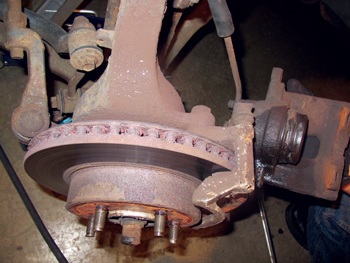
Rotor thickness should be measured in at least six areas of the rotor’s face. The DTV should not vary more than 0.001” in general. Some manufacturers specify zero DTV. See Photo 2.
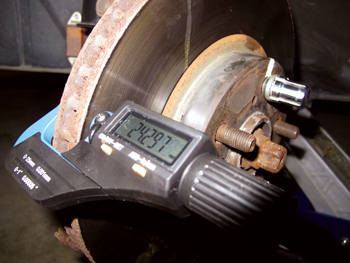
Runout greater than 0.006” is a sign that the flange, rotor and/or bearing should be replaced. The needle of the dial indicator should be perpendicular to the rotor. Measurements should be taken a quarter inch from the edge. See Photo 3.
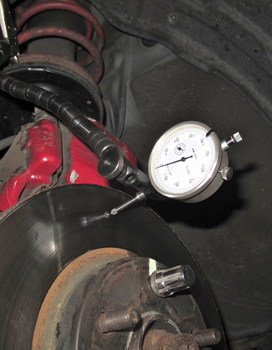
First, find the lowest point in the rotor and set the dial indicator to zero. Rotate the rotor to find the high spot. This is the total indicated runout. Mark the high and low spots on the rotor.
Before the rotor is removed, make sure you mark its position on the flange. If the runout is minor, try repositioning the rotor 180º on the flange to cancel out the runout. See Photo 4. 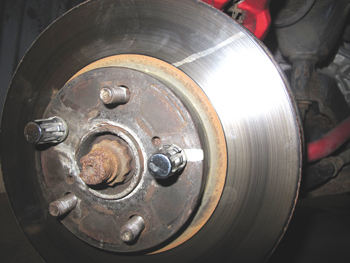
The hub flange is ground zero for pulsation problems. Any runout in the flange will be magnified by the rotor. Before the flange is measured, most of the corrosion should be removed as seen in Photo 5.
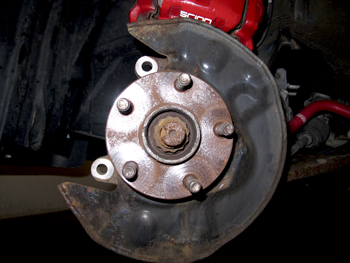
On some flanges, measuring runout is difficult due to a very small area that the needle of the dial indicator can ride on. Most manufacturers recommend taking the reading as far out from the center of the hub as possible. As a general rule, there should be less than 0.002” or below the manufacturer’s specification of lateral runout. See Photo 6.
As much as 0.006” of runout can be corrected with runout correction plates. The notch in the plate should line up with the highest point of runout. After the rotor is installed, verify that the runout is below specifications. 